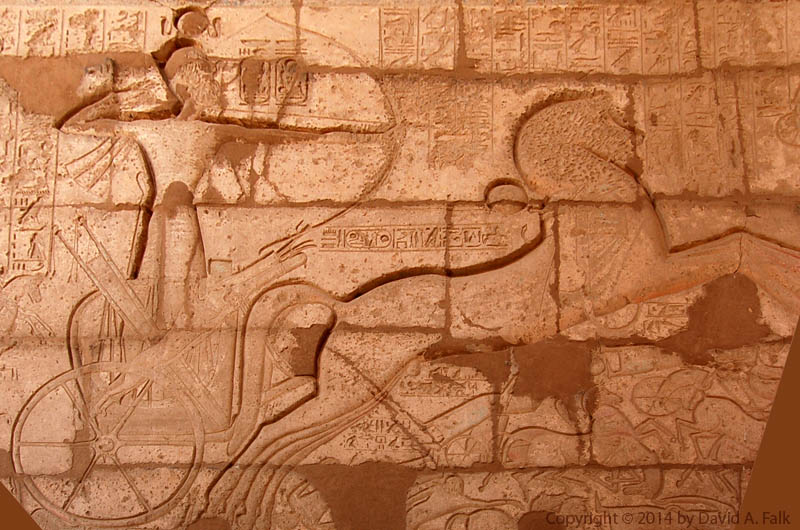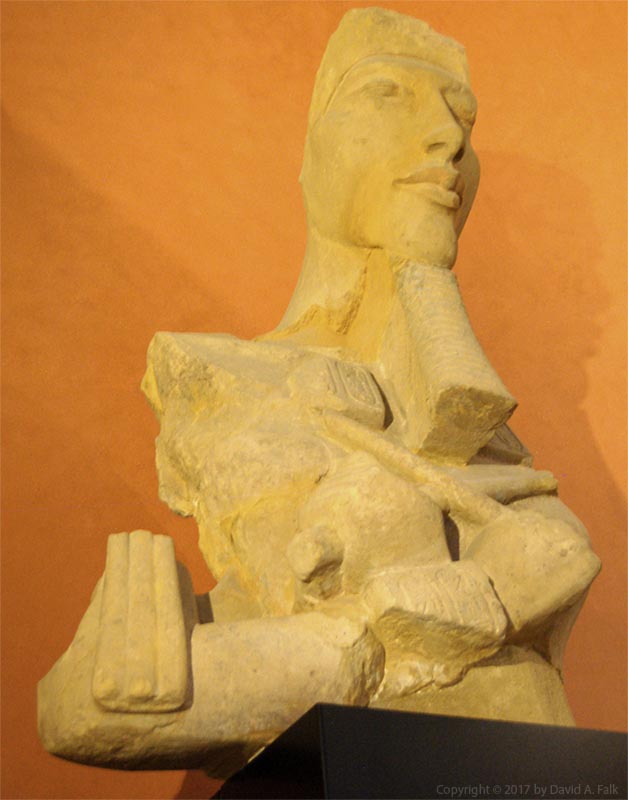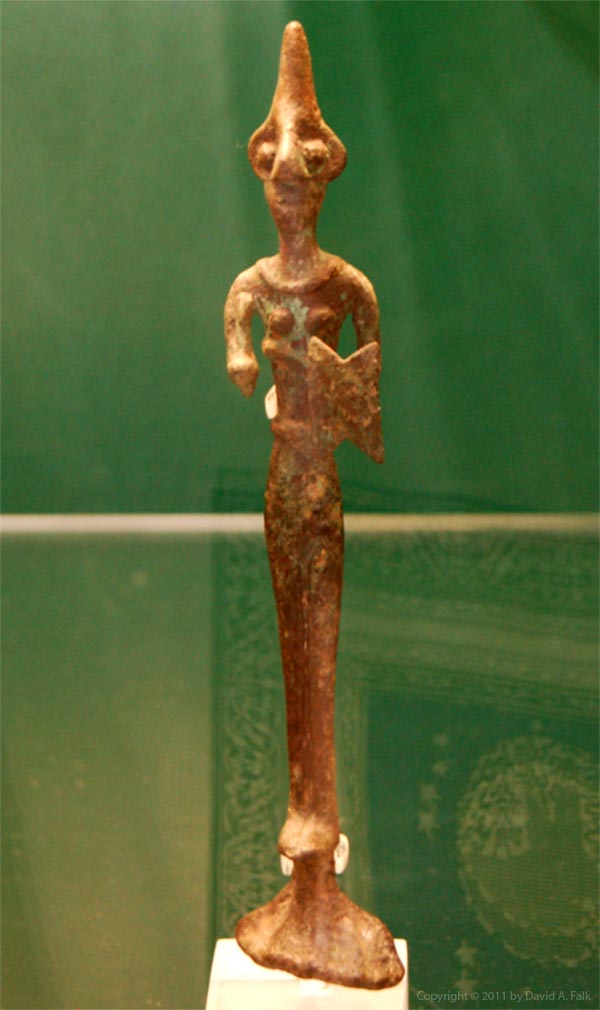Month: October 2018
Atenism, was it really monotheistic?
Aten living daily content in the sky, Your offspring, your august son, Sole one of Re; The Son of Re does not cease to extol his beauty, Neferkheprure, Sole-one-of-Re. I am your son who serves you, who exalts your name. Lichtheim, Literature, 2:91-92.The theological implication of this is important. James Hoffmeier summarizes this situation as “the anointing of the king to make him the Son of God.” Kingship in Atenism is the manifestation of the incarnate Aten. The reference to a unique son speaks to a common theme in ancient Near Eastern literature, which is the idea of an offspring that will carry the legacy of the parent. This motif appears in the inheritance laws of ancient Mesopotamia. It also is found in early Israelite thought with the promise of a son to Abraham even though he already had a son in Ishmael. In ancient Egypt, inheritance often was associated with the passing on of a title or occupation as well as property. Atenism differed from classical Egyptian thought in the belief of creation. Traditional Egyptian belief focused upon creation myth as foundational. But Atenism disregarded physical creation altogether while maintaining the Aten as creator. Akhenaten extolled the Aten as the “creator of all, who makes them live, Great Falcon, bright of plume; a beetle who raised himself, he who was self-created, he who was never born.” Atenism accepted the idea of immanence in the act of continuous creation. The substance and breath of the Aten made every living being alive. “You are One, yet a million lives are in you, To make them live <you give> the breath of life to their noses.” Aten was bidirectionally eternal. That is the Aten was in eternity past the same as he is today and going forward will remain the same. Thus, the answer to the question of origins always centered upon manifestations of the Aten. This sort of divinity was not quite henotheism in the classical sense nor was it any kind of monotheism per se. Because Atenism popularized “the One and the Many” theology, Akhenaten’s religious reforms transformed Egyptian religion from a plurality of gods to one deity radiating from a single source incorporating the substance of all other gods. Atenism was the ultimate deconstruction of deity that Amenhotep III had first attempted, carving out of Egyptian religion a monolatrous pantheism. The preceding preview was an edited extract taken from a book chapter recently submitted to Oxford University Press.
The Tower Migdol
Groundhog: Latest Breakthrough in Chronology
The Problem of Chronology
The fundamental problem was that anyone could develop a chronology without any rigor. Even conservative theories from otherwise respectable academics often had the same epistemological basis as the lunatic theories. Theories asserted to be true couldn’t be shown to be true or false. Prior to 2017 the “sniff test” of plausibility was the best that scholars thought that they could hope for.During my PhD studies I was a research assistant under Kenneth A. Kitchen. As I watched Professor Kitchen work, I noticed how mechanical chronology creation could be. Based upon my observations of how Kitchen constructed chronologies, I began to work on Groundhog: Chronology Test Laboratory in 2014.
At first I tried to create a program that could simply reconstruct Kitchen’s chronological process with a computer. But the deeper I got into it, I observed several things about chronology that were never before documented in any meaningful way.
My Observations
(1) Theories of chronology are essentially the dates or reign-lengths ascribed to the various kings of the ancient Near East. This is the subjective data or hypothesis that any particular modern scholar would be trying to prove. These numbers vary with each tested theory.(2) Kings in the ancient Near East sent letters and treaties to each other. These documents created synchronisms. A synchronism is a relationship between two people that shows that they lived at the same time.
Regardless of the dates assigned to the reigns of the kings, synchronisms are static. Synchronisms do not change. The marriage contract between Ramesses II and Hattusili III is a synchronism that will never change regardless of the dates assigned. Synchronisms are the objective data.
(3) If we have a subjective hypothesis and objective data, designing an experiment to test the hypothesis against the data, provided that the data is sufficient, becomes possible. In the ancient Near East, about 500 kings and 150 synchronisms are attested well enough for this purpose. This provides a sufficient basis for testing.
Development of Groundhog
Having the pieces in place, I developed a software platform with the ability to take a chronology and test it for internal consistency. Using Groundhog, one can reconstruct a chronology and test it against the 150 synchronisms. This test produces a result that shows the chronology to be internally consistent or not. While this test does not show if a chronology is true, it can show if a chronology must be false.For the first time, a chronology can be tested objectively, rejecting certain theories from further consideration. This new tool can also assist human operators to eliminate errors from a chronology that are caused by an inability to factor the consequences of extended interdependencies. And finally, Groundhog introduces to the field a theoretical basis and methodological praxis that has been sorely lacking.
For more information about Groundhog see the project web site at http://www.groundhogchronology.com
Baal-Zephon, Lord of the North
To Amūn of the temple of the gods; to the Ennead that is in Pi-Ptaḥ; to Baˁalim, to Ḳadesh, and to Anyt; (to) Baˁal Zephon (bˁr-ḏȜpn), to Sopd. Papyrus Sallier IV (vs. 1:6)The Hyksos who worshipped the storm god associated this god with the Egyptian storm god, Seth. The Egyptians continued to use this association after the Hyksos left Egypt. Given that the author of Papyrus Sallier IV wrote the toponym Baˁal-Zephon with the Seth character; Baal in this toponym may be a reference to Seth. The second element of the toponym, the word zephon, means “north” in Semitic languages. However, Zephon by itself also appears as a toponym in Amarna Letter 274, most likely as a name of a Levantine city. Thus, it is unclear whether zephon in Baal-Zephon refers to a direction, yielding “Baal of the North,” or a place, “Baal of (the city) Zephon.”


![Seti I relief from Karnak Temple (Illustration from A. H. Gardiner, JEA 6 [1920], pl. 11), with the Migdol.](http://www.egyptandthebible.com/wp-content/uploads/other_photos/migdol.png)

